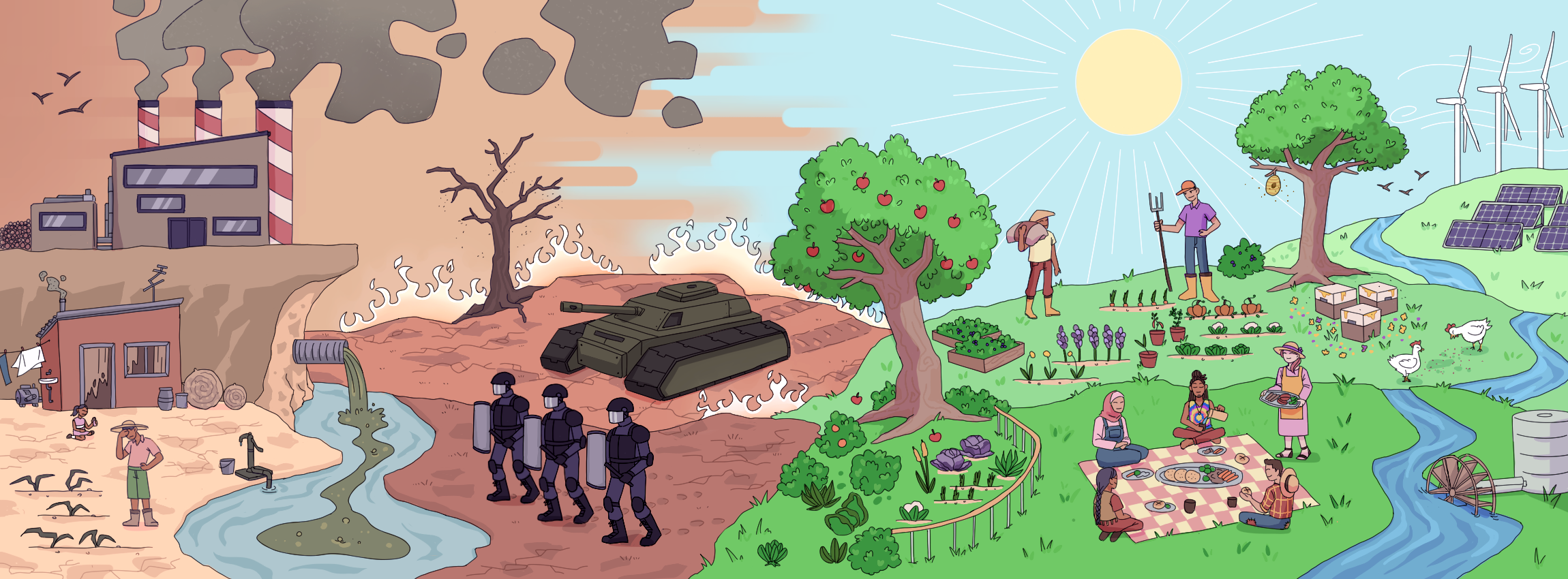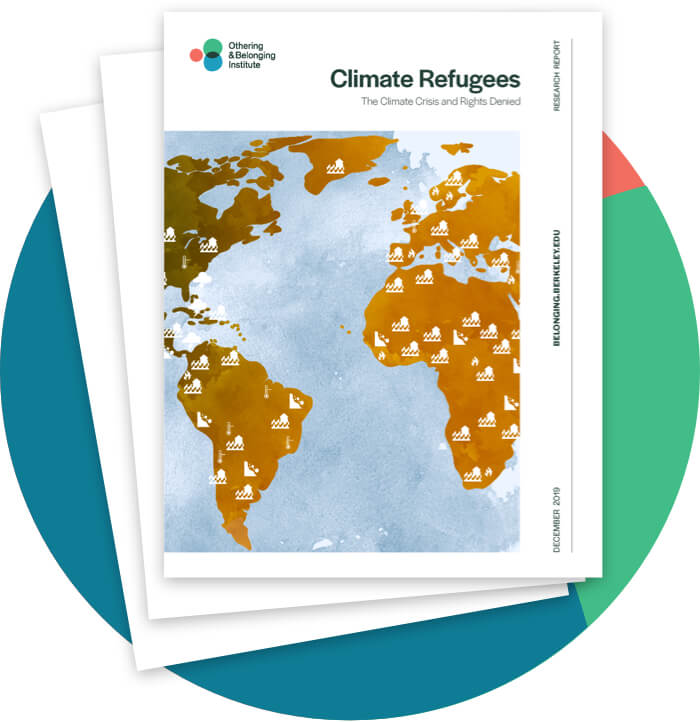Togo
Introduction to Togo
Togo is a nation located off of the West African coast between Ghana and Benin. Its population of 8.28 million is about 56% rural.1 The GDP of Togo is approximately $7.63 billion, with a per capita GDP of around $886,2 with corruption playing a pivotal role in its political economy, with an approximate 25% annual GDP loss due to corruption alone.3 The rural population bear the majority of this burden, with poverty levels twice as high in rural areas (58.8%) as in urban areas (26.5%).4 Togo has a tropical climate and its weather patterns are strongly influenced by the West African Monsoon and the Togo Mountains, which run along the central region of the country.5 Togo is considered a low-income country, with a GDP of approximately $5.8 billion6 and a per capita GDP of only $942.6 (2022).7 Agriculture is a dominant sector in Togo, employing about 65% of the population and contributing approximately 40% to the GDP.8 The historical reliance on agriculture makes the country particularly sensitive to climate change impacts, such as unpredictable rainfall and extreme heatwaves and droughts, which exacerbate poverty and food insecurity.
Mapping Major Climate Events and Climate-Induced Displacement
Togo is considered highly vulnerable to the effects of climate change, ranking 126th out of 181 countries on the World Bank's INFORM Climate Change Risk Index.9 The central and northern regions, where agriculture is predominant, are especially susceptible to climate change impacts such as droughts and floods. An extreme flood in October 2020 destroyed acres of farms, livestock and schools, impacting nearly 19,000 people.10 Loss assessment of 2008 floods estimated 11,688 damaged hectares of cultivated land, leading to significant income losses for farmers and an increase in food shortages across the region in the years that followed.11 Coastal erosion in Togo is also a critical issue, causing land regression in areas that are vital to the country's economy. The nation’s coastal zone accounts for over 90% of Togo's economic activities and is home to more than 42% of the nation's population.12 Over the past decades, Togo has faced increasing climate variability, with notable events including the severe floods of 2008 and 2010, and recurring droughts affecting the agricultural sector. These events have led to significant internal displacement; for instance, the 2007 floods affected over 127,880 people, displaced nearly 14,000, and killed dozens.13 Between 2008 and 2023, over the span of six major floods, Togo has reported 74,000 internal displacements caused by climate disasters.14 Togo is also tasked with navigating increasingly high temperatures, with the mean annual temperature rising by 1.1°C since 1960, averaging an increase of 0.24°C per decade. The most significant temperature increases have occurred from April to June, particularly in the northern regions. Between 1960 and 2003, the number of hot days rose by 15.5%, while the frequency of cold nights has decreased, leaving little time for crop and land recovery.9
Mapping the Costs of the Climate Crisis
These climate impacts have not only disrupted daily life and created widespread displacement, but have also placed significant economic strain on the nation. In 2017, it was estimated that environmental degradation in the coastal areas of Benin, Côte d’Ivoire, Senegal, and Togo cost $3.8 billion, or 5.3% of the four countries’ GDP.15 For example, the 2010 flooding affected 83,000 people and resulted in over US$38 million in damages and losses.16 The costs of these climate events pose an additional threat to food insecurity, most pronounced in rural regions where agriculture is the main livelihood. More recently in 2020, climate hazards cost Togo an estimated CFA26 billion in productivity losses and destruction of arable land, equivalent to 1.23% of the national GDP.17 Consecutive floods inundate fertile land, kill livestock, and significantly reduce yields, patterns that come at a great cost to already vulnerable, small nations.
Mapping Resilience and Mitigation Pathways
Togo has committed to climate action plans that directly address some of the nation’s most pressing health and environmental concerns. Having already committed to reducing greenhouse gas emissions by 21% by 2030 as part of its Nationally Determined Contribution (NDC),18 Togo recognized that many air pollutants and greenhouse gasses originate from the same sources. According to the WHO, in 2016, over 8,000 premature deaths in Togo were attributed to exposure to air pollution, and 93% of the population relied on polluting fuels such as wood and charcoal for cooking. In response to this, Togo’s Ministry of Environment and Sustainable Development and Nature Protection developed an ambitious action plan to address these concerns, the National Plan for the Reduction of Air Pollutants and Short-Lived Climate Pollutants. Its 11 mitigation measures in the plan could reduce emissions of health-damaging fine particulate matter by over 45% in 2030 and reduce Togo’s contribution to climate change through large reductions of Short-lived climate pollutants as well as greenhouse gasses.19 Further, Togo along with four other West African countries agreed to ban the import of dirty fuels from Europe. This move sought to dramatically reduce vehicle emissions and ensure the right to clean air to nearly 250 million people in the region.20
Necessary Changes
Togo has taken a proactive approach in designing initiatives to tackle climate change at its intersection with public health. However, to ensure the success and sustainability of these efforts, several key considerations must be considered to further enhance Togo’s climate action strategy. Mitigating the impacts of extreme flooding on health, infrastructure and agricultural livelihoods is of critical importance in Togo and across the West African region. Further, water scarcity is projected to emerge as a particularly severe issue in the northern regions of the country. With this in mind, Togo would benefit from developing an updated irrigation system to improve water storage and distribution, accounting for water control in flood periods, and the need for distribution in drought periods. Alongside this, the introduction of a nationalized early-warning system that would allow for timely and effective responses that would minimize damage and loss of life. Togo’s location makes clear the need for more information access and policy designed to address rising sea levels, which is currently limited on a national level. Central to these initiatives is the need for a robust and free central government. A total of four people have served as president since Togo’s independence in 1960, with the Togolese people made subject to violence and election repression, largely funded and backed by the French government.21 Mapping a path towards lasting climate justice and resilience in Togo necessitates a framework that genuinely benefits the Togolese people. This involves addressing the lingering impacts of past and present colonial powers and regional elites, thereby empowering the Togolese to shape their nation's ecological future.
Citations
- 1World Bank, "Rural Population (% of Total Population) - Togo," World Bank Data, https://data.worldbank.org/indicator/SP.RUR.TOTL.ZS?locations=TG.
- 2World Bank, "Togo - GDP (current US$)," World Bank Data, https://data.worldbank.org/indicator/NY.GDP.MKTP.CD?locations=TG.
- 3Bertelsmann Stiftung. "BTI 2022 Country Report: Togo." BTI Project. https://bti-project.org/en/reports/country-report/TGO.
- 4"Togo Overview." World Bank. https://www.worldbank.org/en/country/togo/overview#:~:text=In%20additio….
- 5"Togo: Geography," Britannica, https://www.britannica.com/place/Togo.
- 6World Bank. "GDP Growth (Annual %) - Togo." World Bank Data. https://data.worldbank.org/indicator/NY.GDP.MKTP.KD.ZG?locations=TG.
- 7World Bank. "GDP per Capita (Current US$) - Togo." World Bank Data. https://data.worldbank.org/indicator/NY.GDP.PCAP.CD?locations=TG.
- 8Foreign Agricultural Service. "Togo Exporter Guide." United States Department of Agriculture. https://fas.usda.gov/data/togo-exporter-guide#:~:text=The%20Togolese%20….
- 9 a b World Bank. Togo Country Climate and Development Report. World Bank, 2021. https://climateknowledgeportal.worldbank.org/sites/default/files/2021-0….
- 10"Togo Floods: Operational Update (MDRTG009)." ReliefWeb. https://reliefweb.int/report/togo/togo-floods-operational-update-mdrtg0….
- 11Global Facility for Disaster Reduction and Recovery. Climate Change Country Profile: Togo, 2011. https://www.gfdrr.org/sites/default/files/publication/climate-change-co….
- 12United Nations Economic Commission for Africa. Togo: Assessment of Coastal Erosion and Its Economic Impact. UNECA. https://repository.uneca.org/handle/10855/23306.
- 13Sylla, M. Bamba, Ibrahima Diallo, et al. "Climate Change over West Africa: Recent Trends and Future Projections." Journal of Arid Environments. Elsevier, 2016. https://www.sciencedirect.com/science/article/abs/pii/S2212420916305684.
- 14Internal Displacement Monitoring Centre. "Togo." IDMC. https://www.internal-displacement.org/countries/togo/.
- 15"West Africa's Coast: Losing Over $3.8 Billion a Year to Erosion, Flooding and Pollution." World Bank. https://www.worldbank.org/en/region/afr/publication/west-africas-coast-….
- 16Global Facility for Disaster Reduction and Recovery. "Results in Resilience: Enhancing Disaster Preparedness in Togo." GFDRR. https://www.gfdrr.org/en/publication/results-resilience-enhancing-disas….
- 17"Togo: Losses Induced by Climate Hazards Stood at CFA26 Billion in 2020." Togo First. https://www.togofirst.com/en/economic-governance/1011-12883-togo-losses….
- 18"Togo." NDC Partnership. https://ndcpartnership.org/country/tgo.
- 19"Togo’s Minister of Environment Endorses First National Plan to Reduce Air Pollutants and Short-Lived Climate Pollutants." Climate & Clean Air Coalition. https://www.ccacoalition.org/news/togos-minister-environment-endorses-f….
- 20"West African Countries Ban Europe’s Dirty Fuel Imports." Climate & Clean Air Coalition. https://www.ccacoalition.org/news/west-african-countries-ban-europes-di….
- 21"Understanding Neo-Colonialism in Togo." HuffPost. https://www.huffpost.com/entry/understanding-neo-colonialism-in-togo_b_….


